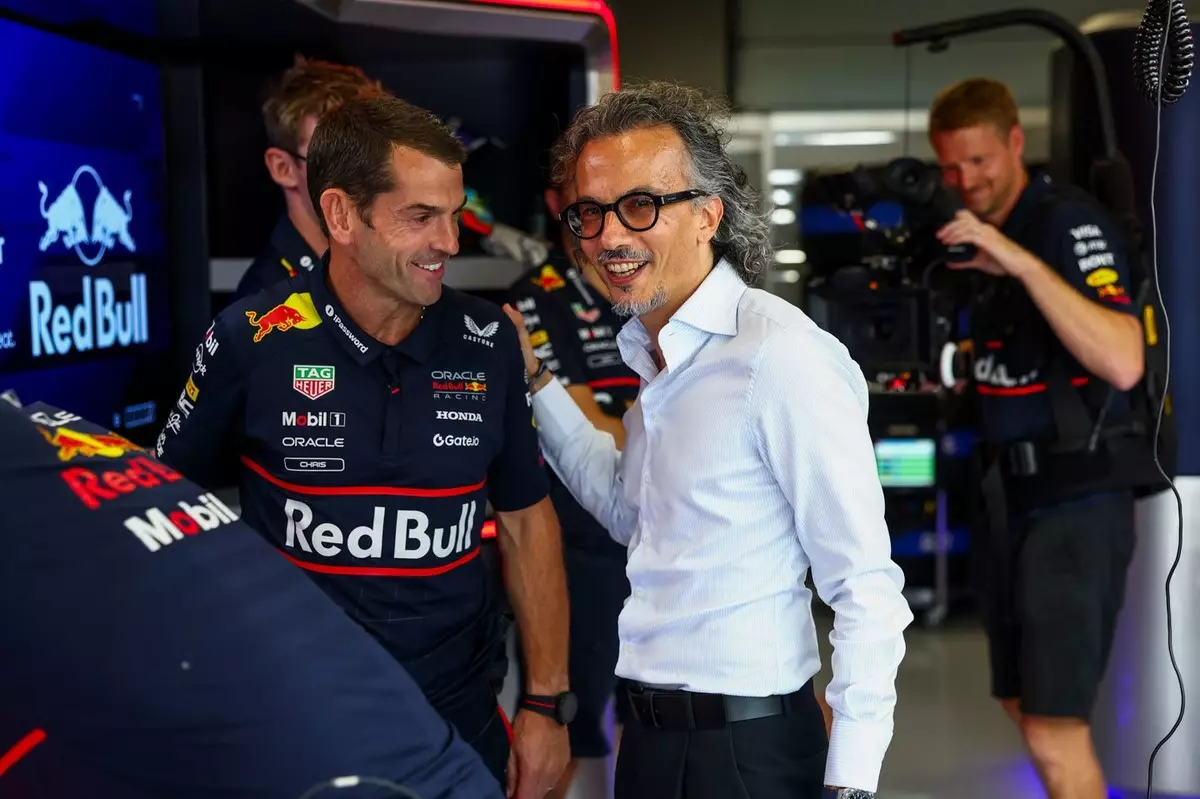The recent leadership overhaul at Red Bull Racing signals a bold pivot toward sustainability and continuous excellence amidst turbulent times. The appointment of Laurent Mekies as team principal and CEO marks more than just a change of personnel; it reflects a deliberate strategic repositioning. This move underscores Red Bull’s resolve to consolidate its racing prowess, adapt to emerging challenges, and maintain its status as a dominant force in Formula 1. While some may interpret the transition as a risk, I see it as a calculated step—one that is rooted in the recognition that legacy alone isn’t enough to sustain long-term success amidst escalating competition.
Mekies’ reputation as a “people person,” as described by incoming Racing Bulls team principal Alan Permane, conveys an understanding that leadership in F1 transcends technical expertise. It’s about inspiring a culture of collaboration, fostering innovation, and trusting in talent at all levels. This focus on people-first leadership signifies Red Bull’s deeper understanding that sustainable success results from nurturing the collective strength rather than relying solely on star drivers or past laurels. With Mekies now at the helm, there’s a sense that Red Bull is actively reshaping its internal dynamics to better cope with the unpredictable landscape of modern motorsport.
Navigating the Challenges of a Transition Year
A significant aspect of this leadership change involves managing expectations—particularly after a recent dip in competitiveness. Red Bull has enjoyed unprecedented dominance with Max Verstappen, but maintaining that edge requires strategic foresight and agility. The concern over Verstappen’s long-term future only amplifies the necessity for leadership that is adaptable and innovative. Mekies is tasked not only with stabilizing current performance but also with laying down a solid foundation for future technological advancements, especially with the development of in-house power units set for 2026.
Permane’s confidence in Mekies’ capabilities is noteworthy, especially considering his extensive experience working directly with him at Racing Bulls. This insider perspective suggests that Mekies’ transition is rooted in familiarity and proven competence. His prior work at Racing Bulls has demonstrated his ability to drive technical synergy, bridging the gap between engineering excellence and strategic vision. His leadership style, rooted in collaboration, can serve as a stabilizing force as Red Bull continues integrating its racing operations across the Faenza and Milton Keynes hubs.
The move toward internal powertrain development indicates a shift toward self-reliance and technological sovereignty, which I believe is crucial given the rapidly evolving rules and the increasing costs of F1 engineering. This strategic investment signals that Red Bull isn’t merely reacting to the present but actively shaping its future—an outlook that could redefine competitive dynamics in the years ahead. Moreover, the integration of Racing Bulls and Red Bull Powertrains demonstrates an understanding that fostering internal talent and innovation is the true key to long-term dominance.
Synergy and Continuity: The Key to Sustained Excellence
One might assume that such a significant leadership overhaul might cause upheaval or fragmentation, but Permane’s remarks highlight a different belief: continuity. The close working relationship between Mekies and Christian Horner, as well as established synergy within the technical teams, suggests that Red Bull is not abandoning its winning formula; rather, it is amplifying its strengths through strategic leadership and operational cohesion.
Red Bull’s commitment to maintaining a balance between innovation and stability is particularly evident in how it plans to conduct cross-hub collaborations. The plan for Permane and the technical teams to operate seamlessly across Milton Keynes and Faenza is an indication of a company that values smooth transitions and organizational resilience. This approach maximizes the technical exchange of ideas and components, which is vital given the complex nature of F1 engineering.
Furthermore, Permane’s acknowledgment of the “strong management team” at both sites reflects a confidence that the core organizational structure is robust enough to support these changes without disrupting ongoing projects. The emphasis on “synergy programs” within regulations also reveals a deep understanding that success in Formula 1 is increasingly dependent on integrated, collaborative efforts, rather than isolated moves or isolated technical advances.
Red Bull’s Bold Strategy: Investing in Leadership for Long-Term Dominance
What truly differentiates Red Bull’s recent actions from mere reactive shifts is its unwavering focus on long-term goals. By appointing someone with proven leadership qualities like Mekies, Red Bull signals its desire to not just survive short-term regulatory changes but to thrive amid them. This is a team that recognizes that real victory isn’t just about winning races; it’s about establishing a sustainable competitive ecosystem—an infrastructure that can adapt, evolve, and ultimately dominate.
Mekies, with his extensive background and demonstrated people skills, embodies this strategic vision. His proven ability to coordinate complex technical projects and lead diverse teams will be crucial as Red Bull transitions toward in-house power units and expands its technical capabilities. This move exemplifies an understanding that technological independence provides a significant strategic advantage, enabling better control over performance and innovation.
In my view, Red Bull’s leadership shift is a statement of intent: a declaration that they are committed to redefining what success means in the hyper-competitive, high-stakes world of Formula 1. It’s a gamble—one that could either pay dividends by cementing their dominance or expose vulnerabilities if execution falters. That said, the meticulous preparation evident in their leadership choices suggests they’re betting on a future where strategic agility and people-centric leadership become the hallmarks of victory.


Leave a Reply